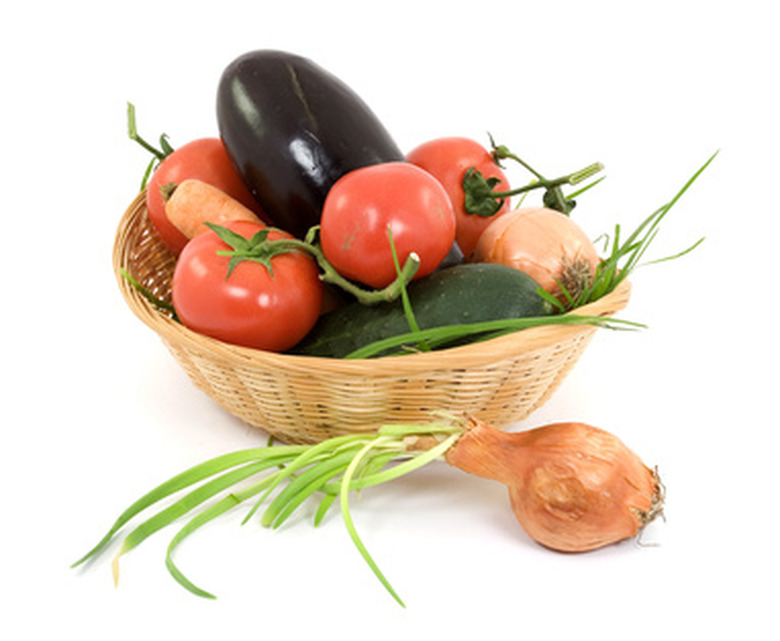Active Ingredients In Miracle Grow
Miracle Gro is a well-known commercial fertilizer mixture used for various types of plants, mainly flowers and vegetables. Miracle Gro contains both macronutrients and micronutrients. Macronutrients are the elements that plants use in greater quantities and include nitrogen, phosphorous, potassium, sulfur, calcium and magnesium. Micronutrients are the essential elements that are used in small quantities but are still important to plant development.
Urea Phosphate
Urea phosphate is a crystalline substance made by reacting urea with orthophosphoric acid. Urea phosphate is the chief nitrogen-providing compound in Miracle Gro, but it also provides phosphorous. Urea phosphate in itself contains approximately 17 percent nitrogen and 43 to 44 percent phosphorous oxide. Nitrogen is a key nutrient in proper plant development, particularly for stem and leaf growth. Phosphorous affects nearly all aspects of plant growth and is necessary for photosynthesis and flower development.
- Miracle Gro is a well-known commercial fertilizer mixture used for various types of plants, mainly flowers and vegetables.
- Urea phosphate is the chief nitrogen-providing compound in Miracle Gro, but it also provides phosphorous.
Potassium Chloride
Considered a macronutrient, potassium helps in water absorption and loss, cell division, and the processing of sugars, starches, and proteins in plants. Potassium also increases flower color, plant strength and cold hardiness.
Sodium Molybdate
Sodium is essential in the movement of water in plant cells and ionic balance. Molybdate (molybdenum) acts to reduce nitrates to ammonia and enables plants to synthesize proteins, preventing nitrogen deficiencies.
Ammonium Phosphate
Ammonium phosphate (monobasic) is another compound contained in Miracle Gro that provides the macronutrients nitrogen and phosphorous. Unlike urea phosphate, ammonium phosphate is more integral in providing phosphorous than nitrogen. Usually in a solid form, this compound contains 11 percent nitrogen and 48 to 55 percent phosphorous oxide. Ammonium phosphate also contains trace elements, or micronutrients, including 2 percent calcium oxide, 0.5 percent magnesium oxide and 1 to 3 percent sulfur.
- Considered a macronutrient, potassium helps in water absorption and loss, cell division, and the processing of sugars, starches, and proteins in plants.
- Ammonium phosphate (monobasic) is another compound contained in Miracle Gro that provides the macronutrients nitrogen and phosphorous.
Zinc Sulfate
Zinc is important in synthesizing proteins and metabolizing carbohydrates as well as aiding in the function of plant growth hormones.
Copper Sulfate and Chlorine
Copper is essential to plants' ability to metabolize nitrogen. Chlorine is a key element in photosynthesis and mineral-element absorption.
Boric Acid
Boric acid (boron) is important to many different plant functions, including seed development, cell division, flowering and pollen germination. Specifically, plants use boric acid in forming cell walls and membranes within the cells, as well as in absorbing calcium.
Manganese EDTA, Disodium Salt
Manganese is essential to plants' enzyme activities for respiration, nitrogen metabolism and photosynthesis.
Ferric Sodium EDTA
Ferric sodium provides iron to plants, which helps plants to synthesize chlorophyll and enzymes to function, especially in young and actively growing plant tissues. Soluble iron like ferric sodium also prevents toxic phenol compounds, which cause plant roots to die, from forming.
- Zinc is important in synthesizing proteins and metabolizing carbohydrates as well as aiding in the function of plant growth hormones.
- Ferric sodium provides iron to plants, which helps plants to synthesize chlorophyll and enzymes to function, especially in young and actively growing plant tissues.
